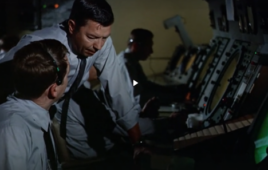Texting bans for drivers don’t reduce crashes, according to a new study released today by the Highway Loss Data Institute (HLDI) at the annual meeting of the Governors Highway Safety Association (GHSA). In fact, the study found that texting bans are associated with a slight increase in the frequency of insurance claims filed under collision coverage for damage to vehicles in crashes.
The study calculated rates of collision claims for vehicles up to 9 years old during the months immediately before and after driver texting was banned in California (January 2009), Louisiana (July 2008), Minnesota (August 2008), and Washington (January 2008). Comparable data were collected in nearby states where texting laws weren’t substantially changed during the time span of the study.
“Texting bans haven’t reduced crashes at all. In a perverse twist, crashes increased in 3 of the 4 states we studied after bans were enacted. It’s an indication that texting bans might even increase the risk of texting for drivers who continue to do so despite the laws,” says Adrian Lund, president of both HLDI and the Insurance Institute for Highway Safety, in a statement.
Noncompliance is a likely reason texting bans aren’t reducing crashes. Survey results indicate that many drivers, especially younger ones, shrug off these bans. Among 18- to 24-year-olds, the group most likely to text, 45 percent reported doing so anyway in states that bar all drivers from texting. This is just shy of the 48 percent of drivers who reported texting in states without bans. Many respondents who knew it was illegal to text said they didn’t think police were strongly enforcing the bans.
The study suggests that better technologies might be one way to reduce accidents if drivers are going to text regardless of state laws. The report cites research done at the University of Glasgow that found a sharp decrease in crash likelihood when participants switched from head-down to head-up displays. This suggests that it might be more hazardous for a driver to text from a device that’s hidden from view on the lap or vehicle seat.
Texting in general is on the increase. Wireless phone subscriptions numbered 286 million as of December 2009, up 47 percent from 194 million in June 2005. Text messaging is increasing, too. It went up by about 60 percent in one year alone, from 1 trillion messages in 2008 to 1.6 trillion in 2009.
Filed Under: Industry regulations




